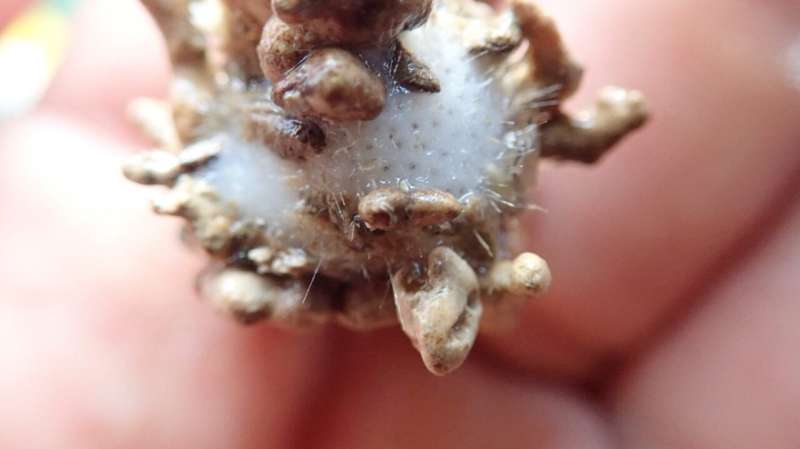Eight new deep-sea species of marine sponges discovered

Although marine sponges are widespread in the oceans, their biodiversity and distribution is still poorly known. Even though the Mediterranean Sea is the most explored sea on Earth, a study by Julio A. Díaz and colleagues, published in PeerJ, reveals the presence of new sponge species and new records in unexplored habitats such as underwater caves or mountains around the Balearic Islands.
The new discoveries will increase the ecological importance of the Mallorca channel seamounts and the littoral caves, providing compelling arguments for the Spanish government to emphasize the need for protection measures. Regarding the underwater mountains, the data suggests a strong case for their inclusion within the Natura 2000 Network, highlighting their ecological significance and the necessity of conservation efforts.
Sponges are aquatic animals that live attached to the bottom of the sea and feed on bacteria and other microscopic food by constantly filtering large amounts of seawater. We currently know more than 9,600 species worldwide, with still many parts of the world unexplored. The sponge fauna of the Western Mediterranean is one of the most studied in the world and yet, the sampling of new habitats in this region is usually an opportunity to reveal new species.
Díaz, a Ph.D. student of the Balearic Oceanographic Center of the Spanish Institute of Oceanography (CSIC), together with other researchers from the same center, have been collecting sponges in the Balearic Islands, Spain. Collections came from shallow underwater caves to deep-sea fishing grounds and underwater mountains (seamounts), descending to depths of up to 1,000 meters.
With Docent Paco Cárdenas, sponge taxonomist and zoology curator at the Museum of Evolution, Uppsala University, they have focused on one particular large group of sponges, the tetractinellids, for which substantial comparative material is available in the collections of the Museum of Evolution.
Before this study, only 16 of the 83 Mediterranean tetractinellid sponges had been recorded in the Balearic Island region. This study identified a total of 36 tetractinellid species, and, in the process, discovered eight new species for science, such as Stelletta mortarium, which was named after the typical kitchen mortar commonly used in Mediterranean cuisine, because of its cup-shape; or Geodia matrix named after its tendency to accumulate all kind of different elements in its body.
Two new species honor two important sponge scientists: Dr. Maria Antònia Bibiloni, who was key to initiate sponge research in the Balearic Islands in the 1980s, and Dr. Joana R. Xavier for her continuous efforts and leadership to support deep-sea sponge research. In addition, some species were re-discovered since their initial description 40 years ago.
More information: Julio A. Díaz et al, From caves to seamounts: the hidden diversity of tetractinellid sponges from the Balearic Islands, with the description of eight new species, PeerJ (2024). DOI: 10.7717/peerj.16584
No comments:
Post a Comment